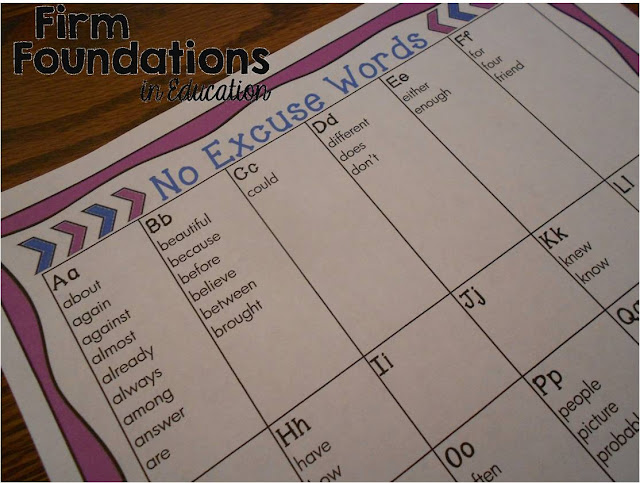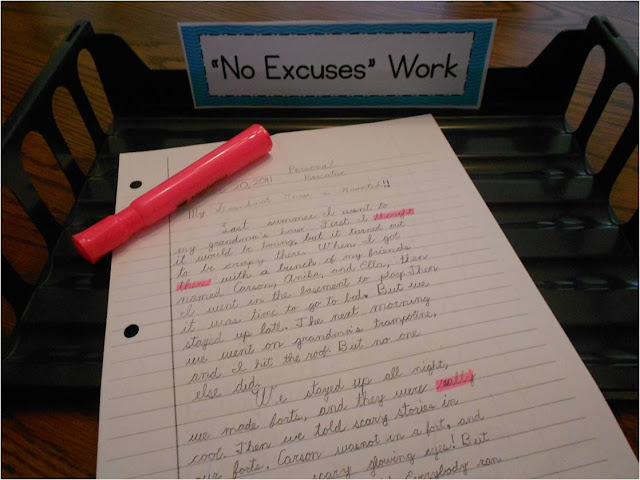Then I switched schools and began teaching 4th grade. I needed to make many adjustments to teaching older children, but one thing I was unprepared for was the students' spelling. I had 4th graders spelling "said" as "sed" and "what" as "wat." I was simply astounded. After all, weren't these first grade sight words?
If you are an upper elementary teacher, you can probably sympathize. I remember asking other teachers for spelling help in an online discussion forum. I received responses such as...
"I've been frustrated with this for the past 10 years!"
"Nothing seems to help!"
"When you find something that works, let me know!"
This post isn't devoted to addressing WHY some big kids can't spell basic sight words, but instead, to HOW we can HELP these kids with poor spelling.
4 Ways to Help Upper Elementary Kids Master Sight Word Spelling:
1. Develop a list of words that students should spell correctly in ALL student work.
The list of words I developed are the most common sight words that students misspell. I call these words "No Excuse Words." They are available as a free download in my TpT store here. Although this list is for 4th grade, it certainly could be used or modified for other grades. Click here to preview an editable version of my No Excuse word list.I copy this list of "No Excuse Words" for each student at the beginning of the year, and they keep it in their student binders as a reference both at school and at home.
2. Big kids need word walls, too!
When I realized my 4th graders had such poor spelling skills, I declared in my mind that I would NOT post a word wall. After all, weren't word walls for the primary grades? However, I began to realize that as a teacher, my job was to provide the support my students needed to learn. And if a word wall was an effective way to hold students accountable for their spelling, then a word wall for big kids was an effective tool.I found a word wall to be effective for my upper elementary students because word walls are so EASY for the student to reference. Instead of needing to take the time to pull a list of words out of their desks to see how to spell a word, a student only needed to glance up at the wall. I also found it made my job easier. Instead of spelling out words for students, all I needed to say was something like, "This word is misspelled. Check the "W" section of the word wall to see how to spell it."
Click here to preview a set of word wall cards I created that match my "No Excuse Word List." Blank cards are included for you to add additional words.
3. Add 2-3 sight words to your weekly spelling list.
Although many of the No Excuse words seem like 1st and 2nd grade words, if the kids can't spell them, they should be reviewing how to spell them throughout the week. Continue reviewing troublesome words throughout the year.4. Require No Excuse Words to be spelled correctly in ALL student work.
If I conferenced with a student or checked their work and noticed that No Excuse Words were not spelled correctly, I highlighted the words and returned the assignment to the students. It was then the student's responsibility to use their No Excuse word list or the word wall to correct the spellings and then turn in their work again into the "No Excuses" bin. I generally had the students make these corrections as part of their morning work. As the year went on, fewer and fewer students needed to make "No Excuses" corrections. They learned to check their spellings before they turned in their work so they wouldn't need to correct their work later.I'd love to hear any successful and creative ideas you use to help your student with their spelling!






No comments: